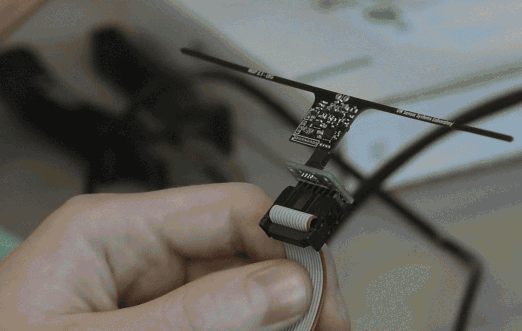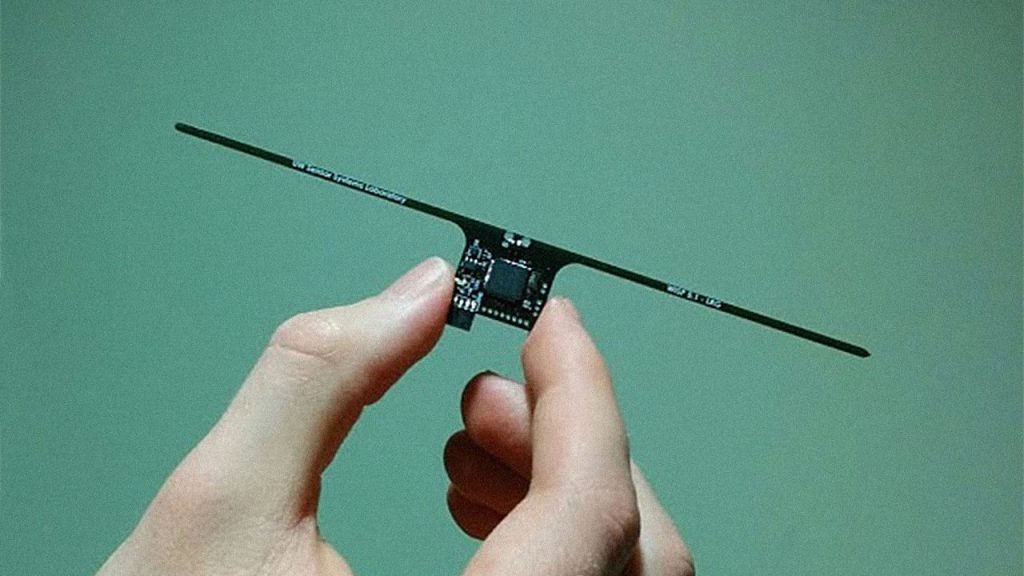Today, the biggest hurdle when it comes to designing new gadgets is battery technology. These big, bulky things restrict the forms our smartphones, computers, and wearables can take, and unfortunately, battery technology is sostagnant that there’s no promise of things getting better any time soon.
But what if you could leave the battery out of the equation entirely? That’s just what the University of Washington’s Sensor Lab has done. Researchers there created the WISP, or Wireless Identification and Sensing Platform: a combination sensor and computing chip that doesn’t need a battery or a wired power source to operate. Instead, it sucks in radio waves emitted from a standard, off-the-shelf RFID reader—the same technology that retail shops use to deter shoplifters—and converts them into electricity.

The WISP isn’t designed to compete with the chips in your smartphone or your laptop. It has about the same clock speed as the processor in a Fitbit and similar functionality, including embedded accelerometers and temperature sensors. “It’s not going to run a video game, but it can track sensor data, do some minimal processing tasks, and communicate with the outside world,” says Aaron Parks, a researcher at the University of Washington Sensor Lab. It accomplishes this latter feat by backscattering incoming radio signals, which Parks says is the equivalent of communicating in morse code with a hand mirror by bouncing light.
Surprisingly, Parks says this technique is pretty fast. It has about the same bandwidth as Bluetooth Low Energy mode, the wireless power-sipping technology which drives most Bluetooth speakers and wireless headphones.That’s what gives the WISP—which has been knocking around as a project since 2006— its new killer feature, thanks to a team-up with the University of Delft: it can now be reprogrammed wirelessly. So, for example, a fitness tracker running on WISP can now download a new tracking function, or be updated to fix a bug or glitch, without plugging it into anything. That’s important because it’s never been done before.
The WISP isn’t the only battery-free computer chip out there. Parks says there’s also ambient battery-free sensors that leech whatever power they can, from passing television waves, cell towers, and so on. But right now, these ambient battery-free computers are very slow, and aren’t remotely programmable. By pairing the WISP with an RFID reader, Parks says they’ve been able to make a battery-free computer that’s up to 10 times as powerful as an ambient one.
But what are these battery-free computers actually good for? Parks says that we’re a long way off from the point when you could wirelessly power an iPhone or a laptop from radio waves, if that’s even achievable at all.
But where WISP could be used right now is architecture. By embedding these sensors in concrete structures, inspectors could detect whether or not a building’s foundations had been damaged by an earthquake—without cracking anything open. Parks also says battery-free computers are perfect for implantable devices, to monitor patients’ health. There’s also interest in WISP-like computers from the agriculture industry, which sees value in it as a way of monitoring thousands of plants at a time.
There are also plenty of consumer applications for battery-free computing too, like fitness bands. And Parks says that you could even put a battery-free computer into a smartphone, which could be used to send an emergency message when the device’s battery is dead. The ultimate appeal of WISP and other battery-free computers, though, is in fully realizing the Internet of Things. It could give “dumb” objects some smarts.
“Imagine if your wallpaper could run apps, or change color to match your lighting, without having to wire it into anything,” says Parks. “That’s not out of the question anymore.”
via fastcodesign.com



